
Private Midnight is steeped in the noir tradition, but fuel-injected into today’s politicized sex and gender climate. This tension between a classic style of suspense entertainment, and contemporary perspectives and fixations, drives the series.
On the surface, it pits a typically street-tough but emotionally damaged Old School detective against a very New Age femme fatale. A strong police procedural element and possible inter-departmental betrayal add a secondary level of realistic ongoing drama. But the real heart of the series is the psychosexual clash between the two leads, which intensifies with each episode, veering subtly, but insidiously into adult fantasy thriller, and ultimately supernatural horror.
Just as the detective-lead thinks he understands the riddles surrounding him in the moment, and has come to some kind of détente with the ghosts of his past…a new trap door opens…and the world around him becomes more bizarre—and dangerous. Each episode gives us a new trap door moment of both revelation and expanding mystery.

Private Midnight is steeped in the noir tradition, but fuel-injected into today’s #MeToo mindscape. This tension between a classic style of suspense entertainment, and contemporary perspectives and fixations, drives the series.
On the surface, it pits a typically street-tough but emotionally damaged Old School detective against a very New Age femme fatale. A strong police procedural element and possible inter-departmental betrayal add a secondary level of realistic ongoing drama. But the real heart of the series is the psychosexual clash between the two leads, which intensifies with each episode, veering subtly, but insidiously into adult fantasy thriller, and ultimately supernatural horror.
Just as the detective-lead thinks he understands the riddles surrounding him in the moment, and has come to some kind of détente with the ghosts of his past…a new trap door opens…and the world around him becomes more bizarre—and dangerous. Each episode gives us a new trap door moment of both revelation and expanding mystery.
He who fights with monsters might take care lest he thereby become a monster.
The true man wants two things: danger and play. For that reason he wants woman, as the most dangerous plaything.
- Nietzsche

Viewers follow the detective on his step-by-groping-step journey of unraveling the darkness around him and within him, believing things are becoming clearer, but are surprised with each episode (as he is), that things not only become stranger—he becomes stranger.
The female lead is the key to this evolution/transformation, and to the series overall. Where the detective seems to be a kind of character we recognize (at least at first), she is enigmatic—a new species of powerful female—with an unexpected set of powers to match. She is at one and the same time, a high society mover and shaker, a murder suspect, possibly some larger crime figure, a premium level hooker-dominatrix, some sort of clairvoyant—and a very unorthodox psychotherapist. And that’s before we even begin to find out the deeper truth.
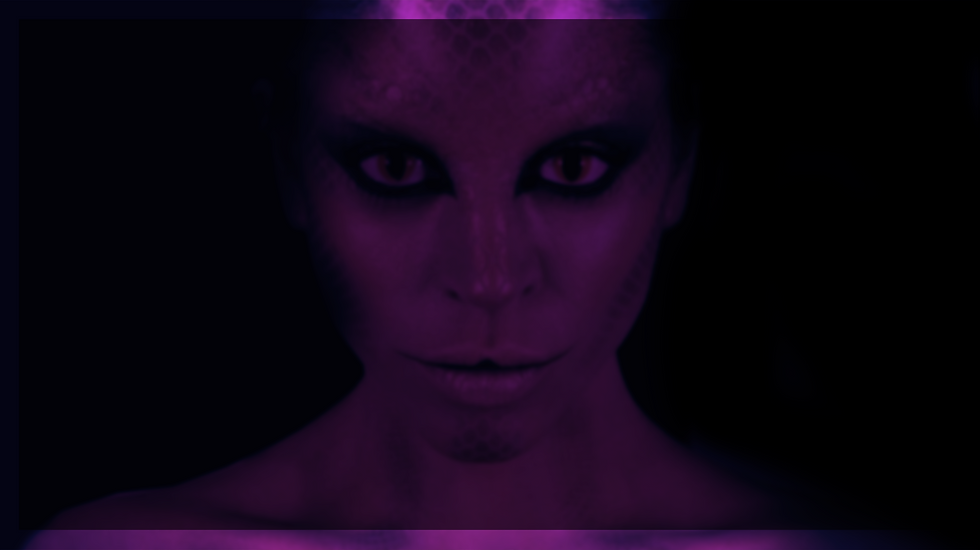
What begins as a seemingly familiar police-suspect cat and mouse game, relentlessly moves into the twisted terrain of complex mind games—and then an outright metaphysical challenge to the detective’s (and our) sense of reality. Because the deeper truth of the story is that the female lead is not just a woman of even great means, resources, and chameleon seductive charms…she is a Creature. A Wyvern.
She comes from a Jungian realm of monsters and demons, and her MO is to psychically and physically prey on emotionally vulnerable yet hardened men like the detective. She feeds on their fear and psychic energy…and yet in return she does genuinely offer a form of therapy, and a kind of healing. It’s just that the price is high. Very high. And her motives are highly suspect. Plus the ramifications could be dire. But one’s monster could be someone else’s angel, right?
Right?
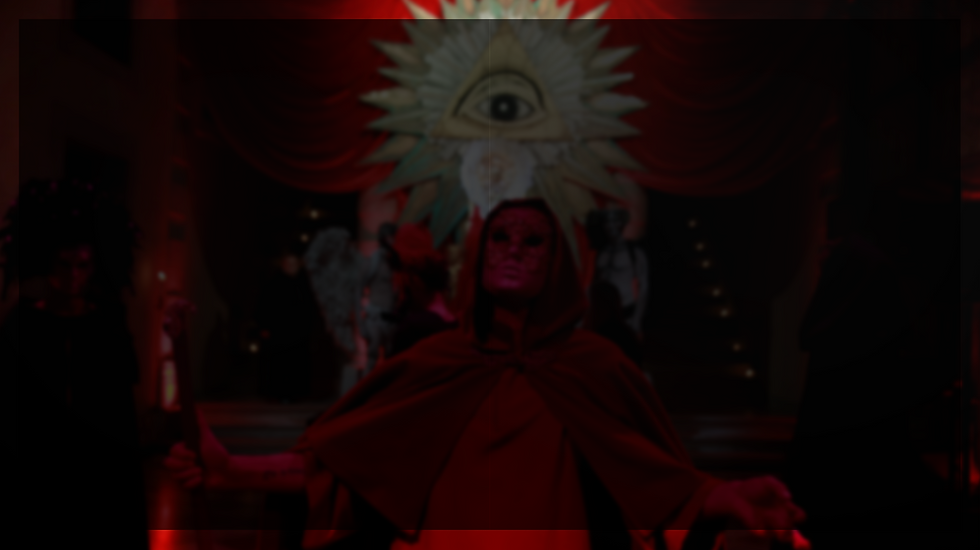
is what propels this series into something much more than a simple detective show.
The occasional unreliable narration plays with the audiences’ mind while simultaneously toying with Detective Jake Rittner’s mind as well. We take this intricate journey along with him and aren’t truly ever sure of what is reality and what is simply in his head.
Result: urban crime and murder presented in terms of ghosts, supernatural evil, and our culture’s obsession with alternative sexualities, transgenderism, and 50 Shades of Grey style BDSM.
As Ulysses S. Grant said, “The need for strategy arises because others too have plans.”
The target market for the series is 21+, a solidly adult audience. The tone and feel is Stylish but Gritty, Intelligent, Streetwise, with an emerging element of the Surreal. The supernatural horror aspects that develop suggest David Lynch and Guillermo del Toro.
PM as a serial narrative takes the deeply layered and compelling storylines of the novel and structures them for multi-episode TV. At the surface level, the show is about crimes that need to be solved. However, the essence of the story comes from the main characters, Detective Jake Rittner and Genevieve Lefleur, who ultimately come together to greatly impact one another’s lives, bringing the storyline to a new level. PM opens as a detective drama and weaves in multiple themes and storylines, past and present, supernatural and grounded. The interweaving of Jake’s and Genevieve’s dynamics, and the unraveling of both characters’ secrets
Like True Detective or American Horror Story, the idea is to do something challenging and dark. Layered yet effective, peculiar, gory, and wrinkled enough to keep viewers hooked.
In the vein of True Blood, Penny Dreadful and Stranger Things, there exist creatures and mythical beasts only thought to be part of folklore and superstition. There is a dark and dream-like haze that permeates the city, which helps them stay undiscovered by the common citizen. And like Taboo, Twin Peaks and Sense8, the line between what can be seen and understood and what lies beyond our comprehension becomes blurred as the spiritual and the supernatural planes seep into this world.
The Killing and The OA are great examples of a mystery just out of reach, where each clue leads to more clues and the audience goes deeper down the rabbit hole.
Filmic influences: Angel Heart, Body Heat, Double Indemnity. The soundtrack is based on lost old jazz torch songs, and the TexMexicano, and 1970s Philly soul music that Jake favors.
The color palette emphasizes sharp monochromes juxtaposed with lurid neon and infrared / night vision green shadings.

The Setting
The series is set in what appears to be for the most part a realistic contemporary Los Angeles. The action that transpires is continually back-dropped by the intense contrasts within the city…the ultra-modern design vs. the old Googie signage and architecture…plush mansions and palm trees up against blood fight corner bars, fading bowling alleys and taco wagons…millionaires and celebrities juxtaposed with winos and homeless camps…chic pretentious gallery art opposed with graffiti. Everywhere the camera turns we seem to see signs in Spanish, Korean, Chinese, and Japanese. The show is effectively an art director’s playground to present the rich and chaotic multicultural bounty and crisis of the sprawling metropolis we think we all know.
But there is also a multidimensional element…

There are a few locations that are not contained in the real Los Angeles. Some of these filter in subtly across the arc of the series. However, the principal one appears first up in the pilot episode, and figures prominently in the series overall. This is a derelict amusement park called Funland (modeled on the old Pike in Long Beach).
The park isn’t far from Genevieve’s opulent (and rather unusual house). It’s a focal point of interest for her (and others) in terms of actual real estate investment. But it’s true worth is much more than aspect or land value. It’s in fact a portal to the mythological realm from which she has emerged, and from which other figures over the course of the series will escape. Possession and control of Funland is one of Genevieve’s prime motivations.
Another very important location that defies normal reality is the interior of Genevieve’s house. Just as she is able to change shape and form, so can the interior of the house.

What follows is a dark, deconstructive,
hallucinatory journey through the detective’s psyche.
Now desperate and on the edge of serious mental instability, Rittner falls fully under her spell and he keeps going back for more—not just for the promise of sex but because of her powerful magnetism and for what she can reveal to him about his past.
Jake begins to notice changes, not just in his personality (emotional episodes, for example, start to become a more normative experience for him) but also in his body. He becomes increasingly distressed, none of his clothes fit him, he can’t eat, and he has blackouts and unnerving dreams. Genevieve’s hold over him becomes stronger and more dangerous as she puts Jake through escalating torments, including a tour of every event in his past for which Jake feels remorse and guilt. As the story progresses, Rittner becomes both obsessed and repelled by Genevieve.
The Main Storyline
Genevieve Lefleur is at first meeting a sensuous redhead, who seems to know quite a bit more about Jake’s past than he’d like. Muse, tormentor and teacher, Genevieve is alluring, intoxicating, and Jake is dangerously drawn to her. Meanwhile, with his young partner Nunez, he continues to work the two bizarre suicide cases that he can’t quite accept as suicides, visiting one of the widow’s two closest contacts. Jake has an odd run-in and discovers an important clue connecting the two grisly deaths, and Genevieve is that link. As part of the investigation, Jake pays Genevieve another visit. Though this time she looks different from before, as does the appearance of the entire house. This throws him off, and Genevieve quickly gains the upper hand—as if reading his thoughts. She imparts incidents that no one but Jake could know. He assumes she’s a dominatrix of sorts, and she is—but much more than that. This is the first sign of her power.
He begins to have regular sessions with Genevieve, which start intriguingly enough, then transform into disturbing psychological games involving ancient mythology and alchemy.
Jake ultimately wraps up the two cases as suicides, and the mystery shifts focus to what is now happening to him. What does it have to do with Genevieve?
In a series of relentless trap door revelations and plot twists, the action moves from the realm of psychological thriller into the apparent supernatural. Haunted by his past, unable to resist Genevieve’s sexual allure and the mind game teachings she offers, Jake is led toward a shocking revelation about himself. He leaves the police force, declaring himself unfit for duty, despite his pride —
he knows that he is physically and psychologically incapable. Eventually, Genevieve reveals that she is not human, but embodies an insidious magic from out of time. She is a shape-changer who’s able to reinvent some of the ghostly images from Jake’s past. She has executed her power on Jake resulting in a supernatural transformation. Jake, believes she has turned him into a woman, and not just a woman, but a female being like herself: an immortal, magically capable female entity that feeds off the sexual desires and needs of both men and women. Jake must now prey upon other strangers in the same way.
Embracing this reality of his new life and his new self, Jake meets the embodiment of all of his insecurities and fears that he has now flushed from himself during his transformation. Jake, now calling himself Serena, makes a plan to kill Genevieve through the same insidious magic. Though before he can execute his plan, Genevieve disappears, leaving only a note behind, acknowledging their eventual confrontation or that he will conspire with her.
We’re left uncertain if we’ve witnessed his descent into madness, or whether he truly has ventured into the shadows that lie beyond reality. As the series advances, we see that insanity doesn’t exclude or preclude the supernatural. They can exist in parallel, just as the mystical doorway of Funland can be found in LA (at least by some).
Private Midnight is in fact a kind of monster story, not like Cloverfield, with a giant action figure run amok. In this case, the Creature is a beautiful woman who can change form and make others change form too.
As the series progresses further, we learn that she is not as unique as we first want to believe. There are others of her kind, or similar in stature and danger. They too have desires and schemes.
Secondary Storylines
Jake’s personal and professional past intersects the main storyline at every turn. He’s haunted by ghosts of his childhood, very specifically the fate of his father, who was a sternly macho house builder and also a deeply closeted and denying homosexual (and a man of great temper), plus the death of his epileptic sister, who fell from a tree house where Jake and his teenage friends were drinking. Her name was Serena, and this is the name he chooses when he seemingly transforms into a female Wyvern like Genevieve.
There’s also the ongoing matter of past arrests he’s made when he worked Vice with his old partner Jack McInnes. They played a little bit more than just fast and loose, and made many enemies, while getting embroiled in some shady dealings that Jake finds aren’t so easy to walk away from, even years later. The kinder, more sentimental help-the-underdog side of him also led him to assist some folks who still need assistance. His life on the job is a mix of bad pennies coming back, and a few shiny dimes. Of very personal import was a prostitute he fell in love with, who disappeared, leaving him bereaved and confused.
Jake’s personal and professional past intersects the main storyline at every turn. He’s haunted by ghosts of his childhood, very specifically the fate of his father, who was a sternly macho house builder and also a deeply closeted and denying homosexual (and a man of great temper), plus the death of his epileptic sister, who fell from a tree house where Jake and his teenage friends were drinking. Her name was Serena, and this is the name he chooses when he seemingly transforms into a female Wyvern like Genevieve.
There’s also the ongoing matter of past arrests he’s made when he worked Vice with his old partner Jack McInnes. They played a little bit more than just fast and loose, and made many enemies, while getting embroiled in some shady dealings that Jake finds aren’t so easy to walk away from, even years later. The kinder, more sentimental help-the-underdog side of him also led him to assist some folks who still need assistance. His life on the job is a mix of bad pennies coming back, and a few shiny dimes. Of very personal import was a prostitute he fell in love with, who disappeared, leaving him bereaved and confused.
Jake’s personal and professional past intersects the main storyline at every turn. He’s haunted by ghosts of his childhood, very specifically the fate of his father, who was a sternly macho house builder and also a deeply closeted and denying homosexual (and a man of great temper), plus the death of his epileptic sister, who fell from a tree house where Jake and his teenage friends were drinking. Her name was Serena, and this is the name he chooses when he seemingly transforms into a female Wyvern like Genevieve.
There’s also the ongoing matter of past arrests he’s made when he worked Vice with his old partner Jack McInnes. They played a little bit more than just fast and loose, and made many enemies, while getting embroiled in some shady dealings that Jake finds aren’t so easy to walk away from, even years later. The kinder, more sentimental help-the-underdog side of him also led him to assist some folks who still need assistance. His life on the job is a mix of bad pennies coming back, and a few shiny dimes. Of very personal import was a prostitute he fell in love with, who disappeared, leaving him bereaved and confused.
Jake’s personal and professional past intersects the main storyline at every turn. He’s haunted by ghosts of his childhood, very specifically the fate of his father, who was a sternly macho house builder and also a deeply closeted and denying homosexual (and a man of
great temper), plus the death of his epileptic sister, who fell from a tree house where Jake and his teenage friends were drinking. Her name was Serena, and this is the name he chooses when he seemingly transforms into a female Wyvern like Genevieve.
There’s also the ongoing matter of past arrests he’s made when he worked Vice with his old partner Jack McInnes. They played a little bit more than just fast and loose, and made many enemies, while getting embroiled in some shady dealings that Jake finds aren’t so easy to walk away from, even years later. The kinder, more sentimental help-the-underdog side of him also led him to assist some folks who still need assistance. His life on the job is a mix of bad pennies coming back, and a few shiny dimes. Of very personal import was a prostitute he fell in love with, who disappeared, leaving him bereaved and confused.
He’s screwed up so many relationships in the past, a lot is riding on this one. As things get stranger and stranger with his link to Genevieve, Abby holds out a connection back to the Normal, which of course becomes ever more strained. She also sadly, offers Jake’s adversaries a major channel of vulnerability.Jake definitely has a very complex situation in hand regarding her when he transforms into Serena.
Main Characters
JAKE RITTNER: (40’s) — a physically powerful but emotionally broken homicide detective. His hefty frame, scarred and gunshot ridden, affirms many past indiscretions both on and off the job. Twice divorced, and a recovering alcoholic, much of the drama of Jake’s life stems from deep emotional trauma left long unattended. Jake also carries the shame of his father’s closeted homosexuality and the perceived guilt of his sister’s death. Jake is haunted by what he calls “El Miedo” (The Fear), the nagging voice in his head that breaks him down, and taunts him.
Jake finds comfort in the dark crevices of the city. Though he’s worked at the precinct for years and is one of the best they’ve got, Jake is a hard-boiled dirty cop. He likes to take justice out on others. Not as judge. Not as executioner – as fellow sinner. With a bit of decency left in him, he attempts redemption through collaring crooks and personal salvation in the form of AA. And though quick-witted, he often defaults to his overdeveloped masculinity that heeds dangerous urges and welcomes confrontation. This all leaves him ripe for developing his obsession with Genevieve.
Michael Cudlitz, Michael Chiklis, Holt McCallany

GENEVIEVE LEFLEUR: (30’s) – The femme fatale personified; Sexy, mysterious, and unconventionally beautiful. While youthful in appearance she has an agelessness to her. She is equal parts psychiatrist, seer, and dominatrix. She describes herself as a ‘philosophical erotic consultant’, wielding sex as a tool, but is sexually untouchable. She is elusive, but doesn’t long to be understood. While at one point a suspect in Jake’s case, Genevieve continues to draw Jake back to her even after she is cleared. Genevieve completely disarms Jake with her intuitive sense of who he is, and she cuts through his tough exterior to reach the deeply confused person underneath. The truth is, she’s a Creature—a Wyvern, an ageless succubus and shape shifter, who preys on people both psychically and physically, most especially men. Genevieve’s seemingly hypnotic powers evolve over the course of the story from being grounded and almost coincidental, to completely supernatural and inhuman.
Jesse James Keitel, Maggie Grace, Zoe Kravitz


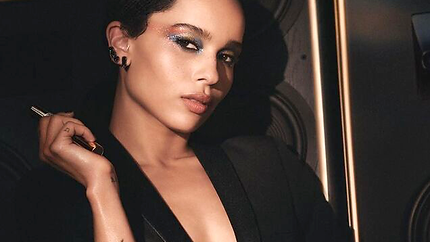
Supporting Characters
JACK MCINNES: (40’s) – We see him mainly in flashbacks. Lean, taut, and a dandyish dresser in a sleazy way. He was Jake’s partner and has an unearthly ability to cause trouble. They worked Vice together. Jack is a cautionary tale, a charming psychopath of a Woody Harrelson nature. As cold-blooded as he is / was, Jake can’t help but have a perverse admiration for him and his disappearance weighs heavily on Jake’s mind. Jack falls prey to Genevieve and ultimately commits suicide. However, he continues to appear as a phantom to Jake and his new incarnation in crucial moments. It remains ambiguous if he is a force for good or evil. Even as a ghost, he remains his own agent, outside easy categories. He is the catalyst for Genevieve and Jake’s introduction.
Shawn Hatosy, Woody Harrelson
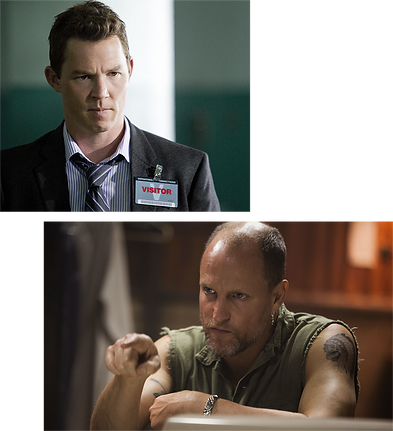
CHRIS NUNEZ: (Early 30’s) – Jake’s new, younger partner. Very sharp but a somewhat earnest Hispanic-Latino. He’s still moist behind the ears relative to Jake, but he notices a lot and remembers everything. He has a background from the streets, but that was a good Catholic school ago, and he now has ambitions. He’s engaged to the daughter of the D.A., a relationship that figures prominently in the series.
Christian Navarro, Diego Boneta
ABBY: (17) – Jake’s daughter. Smart, but something of a smart ass too. Part goth / part emo / part shy and troubled young person, who is too near being a woman for Jake’s liking, and too far from adulthood for hers. Despite all the mistakes Jake has made, all the failings, and the times he’s failed her—there’s still real love between them.
Kristen Ritter, Abigail Breslin


DETECTIVE AMY KIM: (30’s) – A tough no-nonsense Asian American. Very “on the job”. A big personality in a small frame. She has a lot of issues with Jake’s way of doing business, and she has / had some kind of major beef with his old partner McInnes. But she’s honest and always straight with Jake (and us). She’s the embodiment of the contemporary new social climate that Jake rebels against—and yet she’s also a link to the Normal things he secretly craves—and will come to admire all the more as things get stranger for him.
Arden Cho
ZANDRA (aka Adele Bixby: (30’s) –Ethnically ambiguous. Also goes by the pseudonym Titus Logan, a lurid paperback author about the occult. She’s a mix of hooker, pseudo-fortune teller and scam artist. She was arrested a few years back by Jake, and has become a combination informant and sometime lover. She likes the rough sex he favors, and is an outlet for his frustrations with Genevieve. She has big ears and knows how to keep her mouth shut too. As Jake depends on her tip-offs and intelligence as a detective, she becomes his key ally when he transforms and squares off against Genevieve. She is the only person from his past that he directly trusts with the knowledge of what has happened to him.
Indya Moore
THOMAS HILL: (50’s) – The District Attorney, and the father of Chris Nunez’s fiancé (and eventual wife). At the start, we have a little sympathy for his wanting to rein in Jake. After all, he is the D.A. and has to uphold the law. Right? Over the course of the series, his sleaziness begins to show, and just as Jake transforms, so does he…and we come to see him as a much more deeply corrupt figure than Jack McInnes ever could’ve been. He is in fact, although nominally human, every bit as mythically evil as the beings that lurk on the other side of the Funland portal.
Vincent D'onofrio
THE DA'S DAUGHTER: (Late 20's to Early 30's) – Chris Nunez’s fiancé. The ultimate “daddy’s girl” on the surface. Entitled. Arrogant. Fawning. In reality, this is a cunning, sociopathic social climber, with a game plan that openly celebrates collateral damage. One key storyline is Chris Nunez’s growing realization that this trophy-wife-to-be considers him the Woke Trophy—just as long as he’s useful to her schemes.
Abbey Lee Kershaw
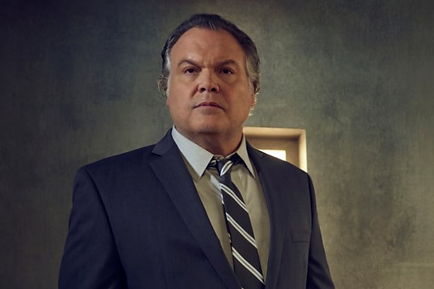

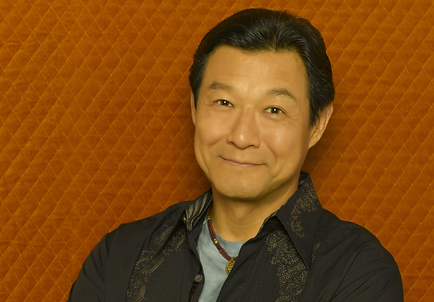
JIMMIE ONE LEG: (50-60’s) – The owner of the lost-in-time pool hall that is Jake’s sacred refuge. He’s Jake’s only real friend. Grass stem thin, wasted and trembling a lot of the time and yet still maintains that unexplainable Old World joy of living, even if his life is crap. There is something deeply fatherly about him, despite his pint size—and yet motherly too. You just naturally pour out your troubles to him, even though he so obviously has plenty of his own. Jake never believes a thing he says yet loves to hear him talk. Jake trusts him with his very soul but not his wallet
Jamie Sato
SOPHIA: (20’s) – One of the widows of the weird suicides. A mix of hippie New Age chick, and dark Mediterranean goddess. Petite, rich dark hair, skin tone the color of olive oil. The embodiment of California flakiness and seemingly genuine innocence, she’s much more involved in Genevieve’s bizarre rituals than Jake wants to know about.
Sofia Milos
LIEUTENANT JOHN BRYCE: (50’s) – On the surface, a typical pain-in-the-ass very rigid supervisory figure. Underneath his right angle / square every corner exterior however, he’s a subtler and more lateral thinker than he appears. This will become clearer as the series progresses, and the plot line involving Nunez and the D.A. takes fuller shape.
Andre Braugher
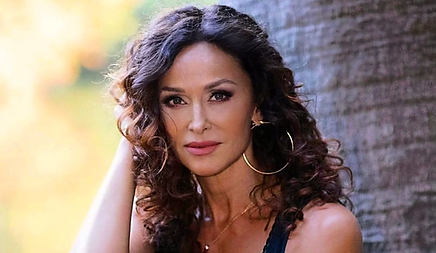

MUTZA: (Ageless) – A giant, scar-faced African. He is the caretaker of Genevieve’s home. He dresses like an ambassador, and it’s unclear if he is fully human, or like Genevieve, some refugee from the mythic realm.
THE BLUE KNIGHT: (30’s yet ageless) – An enigmatic figure, who seems to bridge the Real World of LA with the mythic realm. Appropriately, he lives in the ruins of Funland, apparently a somewhat mentally ill/challenged homeless man, who dresses as a security guard. Maybe he was once a security guard at the amusement park, and just couldn’t let go. Maybe he’s something very different—and not so challenged or confused as he may seem. Who he really is, and the significance of the role he plays, is one of the important mysteries the series comes to finally reveal.
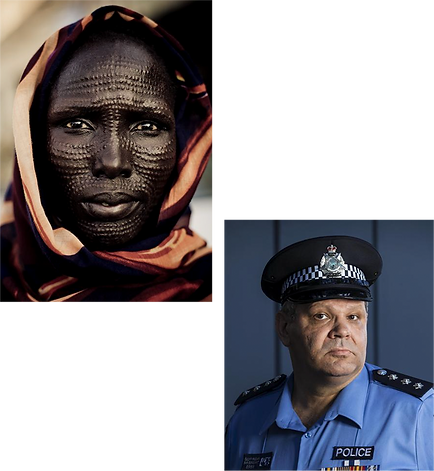
THE ASSASSIN: (Unknown)
A peculiar menacing figure whose nature and full intentions are mysterious. Is this one of Genevie’s human operatives? A supernatural ally or servant? Some kind of opponent from another perspective? The dark cipher is certainly a shadow (in some form) of Rittner’s tangled personal and professional pasts. An emblematic ghost. Also, a representation of the intersection of worlds and the fluid nature of gender. From shades of McInnes, Rittner’s old partner, to some personification of his demon El Miedo (the Fear)…

Genevive’s Backstory – the Magic of the Series
Genevieve is a mythic creature known as a Wyvern. She was lured into the human plane long ago by a male figure of great magic.
In human form, she fell in love with him—but he tricked her, and used her power to be able to reincarnate himself.
She eventually defeats him, but her treatment by him forever turns her mind and heart to revenge on men. She must psychically feed on males in order to maintain her powers—and yet she has a curious sympathy/empathy for them.
In a strange way, she is both an arch-feminist and the ultimate anti-feminist.
One contributing source of her empathy/confusion regarding males is that her weakness in human form has been the feminine one of wanting to give birth. As she tells Jake when he transforms, Wyverns can get pregnant as humans—but they give birth to monsters. What she doesn’t fully disclose, but what Jake as Serena will come to discover, is that these monstrous births she had to destroy were all sons. She sacrificed a key aspect of her power in these
episodes, which is what will allow Serena to finally overcome her, but even she is not immune to guilt.
Understood this way, Genevieve is an allegorical figure for the key female emotions/desires of romantic love and motherhood gone tragically wrong. She was too trusting in love, and so becomes clever and vengeful. She was too needy
of motherhood, and so ends up “eating” other young.
She’s also a large canvas symbol of all the pressures and contradictions that women face today: be caring and nurturing, but don’t get taken advantage of…want children but be successful in the world…be beautiful but powerful…be supportive of other females but be competitive, etc.

One contributing source of her empathy/confusion regarding males is that her weakness in human form has been the feminine one of wanting to give birth. As she tells Jake when he transforms, Wyverns can get pregnant as humans—but they give birth to monsters. What she doesn’t fully disclose, but what Jake as Serena will come to discover, is that these monstrous births she had to destroy were all sons. She sacrificed a key aspect of her power in these episodes, which is what will allow Serena to finally overcome her, but even she is not immune to guilt.
Understood this way, Genevieve is an allegorical figure for the key female emotions/desires of romantic love and motherhood gone tragically wrong. She was too trusting in love, and so becomes clever and vengeful. She was too needy of motherhood, and so ends up “eating” other young. She’s also a large canvas symbol of all the pressures and contradictions that women face today: be caring and nurturing, but don’t get taken advantage of…want children but be successful in the world…be beautiful but powerful…be supportive of other females but be competitive, etc.
The men she chooses as targets always have some kind of sexual / gender ambivalence, which reflects her own deep ambivalence about the sons she murdered and her hunger for revenge.
Serena’s choices of prey will be much more methodical, and even clinical… which will help underscore the rising tension between the two females. Although presented as the villain / adversary, Genevieve ironically has both heroic and human qualities that Serena doesn’t.

The Overall Story Arc
The series has been conceived on the basis of a solid four-season frame (10 one-hour episodes per season), with the possibilities of further extension.
Season 1
Introduces the major recurring characters, the escalating core conflict between Genevieve and Jake, the ghosts of Jake’s past, the question of loyalty or betrayal on the part of the Chris Nunez character, and the complexities of Jake’s relationship with his daughter.
Weaving their way through these elements are the two rather hideous apparent suicides Jake feels compelled to investigate, despite the resistance of his superior Lt. Bryce. What’s the link between them? How is Genevieve involved? In the shadows and in the wind lurks the specter of his old partner Jack McInnes. Just what part does he play in all this?
The season concludes with a dramatic resolution to some of these puzzles—and takes us right up to the verge of Jake’s transformation.
Season 2
The full truth is now revealed about Genevieve’s nature (but nothing to do with her deeper motivations or the scale of her plans).
He disappears, giving Jake (now as Serena) a chance to reconnoiter and adapt to a radically new life—as both a young female, and at first a high-end call girl, using Jake’s old knowledge of the streets. There’s also the very dark matter of adjusting to the Wyvern powers, and the relentless need to seek prey. At this point, Serena doesn’t yet have the full range of powers of Genevieve—she’s limited in her shape-shifting ability.
Again, the past keeps coming back in a variety of forms to trouble Jake—only now as Serena, he/she has a whole new arsenal to deploy.
We learn the full rankled story of McInnes…both the depth of his corruption, and also the curious nobility of his violence and competence.
The plot line focusing on Nunez and the D.A.’s crooked past intensifies. Serena both uses Nunez and helps him.
The season ends with the return of Genevieve, who makes an explicit proposal to Serena to join her, without explaining what such a grim alliance might mean—or what role Funland plays in her machinations.
Over-estimating her powers, and still not fully grasping the significance of Funland, Serena inadvertently releases some of the other denizens of the mythic realm. At the same time, Genevieve’s original love / nemesis / antagonist, who set the whole strange saga in motion, reappears. All of these “arrivals” or escapees have full shape shifting capabilities, and we are left to guess who they are amongst the humans.
Meanwhile, echoing these supernatural enemies or agents, some of Jake and McInnes’s old human adversaries emerge from prison in the Normal World of LA, seeking retribution against Jake’s family, and everyone he’s been friendly toward.
Season 3
Serena rejects Genevieve’s offer of partnership, and their rivalry turns into a “war of witches” as the two Wyverns contest each other’s power. There’s considerable collateral damage amongst the humans in the so-called Real World.
Serena moves from high-end call girl to high society mistress, mirroring Genevieve’s influence in the local business community. (Every supernatural interaction between them has some analog reference in the Normal World.)
Abby ends up repeating many of the same mistakes a younger Jake made, and despite Serena’s protection, is haunted by her own ghosts.
Nunez undergoes a terrifying ordeal, unaware that it’s at the orders of his now father-in-law, the D.A. (believing that Jake is dead, the D.A. has no more use for Nunez’s collaboration, and in fact did everything he could to sabotage the marriage).
Season 4
Abby starts to veer into a life path not unlike the prostitute that Jake originally fell in love with—and then has the redemptive moment he didn’t have (or didn’t have soon enough). She transitions into an energized social worker and neighborhood advocate—ironically in strong opposition to the projects Serena is involved in.
Nunez learns the full truth about his father-in-law the D.A., and now outright reveals the courage and sense of honor we’ve been hoping he would demonstrate from the beginning. His actions bring about the disgrace and incarceration of the D.A., but they exact a great personal toll, in that his wife (the daughter) has a total nervous breakdown, and his upward climbing marriage more or less explodes on impact with the truth.
Serena is forced to conduct combat on both the Normal and Supernatural levels (protecting Jake’s old friends and family from the bad guys of the Real World), while contesting with Genevieve and some of the figures she released from the Funland portal.
Having grown clever and fully powerful, Serena manipulates Genevieve’s old antagonist / love interest into helping her defeat Genevieve once
and for all (something she may not have been able to do on her own). She then tricks this male figure from the other world, back through the portal, and sets fire to the amusement park, closing the gate for good.
She’s prosecuted for arson in the Real World, but a dirty lawyer that Jake and she have helped comes to her aid. The price of closing the portal would’ve been worth the charge in any case.
With Genevieve “dissolved”, Serena has now replaced her—for both good and ill.
We at last learn the secret of the Blue Knight character.
There’s a new Wyvern Queen on the throne in this dimension, and we are uncertain if she will continue the kind of reign Genevieve enacted or not.
One thing is certain…there are figures from the mythic realm that she released that are still at large.
This opens the portal, so to speak, for further extensions of the series.
Episode by Episode
Each episode advances the Main Storyline, and two of the key Secondary Storylines in alternating sequence. Each episode also reveals something important from Jake’s past.
Without being overly formulaic, a rough rule of thumb is the following gauge of priority.
50% - Main Storyline
20% - Secondary Storyline (A, B, C, D)
20% - Secondary Storyline (A, B, C, D)
10% - Jake’s Past
Themes/Concepts
-Can we resolve or escape from the past?
Jake’s past—the shame and confusion he feels over his deceased father’s closeted homosexuality…the guilt over his sister Serena’s death (she was epileptic and fell from the tree house where she was drinking with Jake and their friends when they were teenagers). What price would you pay for redemption, forgiveness and transcendence of your “sins”?
-Can love ever be truly “healthy?”
-What is the real nature of gender identity?
What is the natural truth, about the power dynamics between women and men in sexual relationships?
-What if ghosts and demons are real?
-How much transformation would you accept to actually change?
Writer’s Guidelines
1. The series does not employ the term or technique “cliffhanger.” This device, while perfectly valid in some contexts, always implies a kind of obvious tease. It’s easily done, and to some extent “cheap.” Instead, episode-by-episode, PM utilizes the mechanism of the Trap Door.
This too, is a method of creating suspense and maintaining engagement, but it has some key differences. For one, it organically emerges out of the overall story arc and each episode’s development—it’s not just an abrupt or overly contrived ending for the sake of effect.
Secondly, while it definitely raises questions and promotes interest in what will happen next, it always provides some degree of satisfaction/resolution about a mystery/question/crisis that has come before. Cliffhangers don’t necessarily do this.
Thirdly, it suits the series because it’s the dominant metaphor/guiding motif for the storyline overall. It’s not some storytelling technique applied to the plot development—it’s fundamental to it.
Finally, the Trap Door has a tonal quality that suits the series. Adult, Intelligent, Cunning, Seductive.
Cliffhangers, like O’Henry endings, are seen by many people as dumbmarket gimmicks. That’s not what this show is about. We want to keep even smart and savvy viewers guessing—and engaged at an increasingly deepening level.
One of they key things that the novel the series is based on has been praised for, is its capacity to continuously surprise even very cluey/clever readers. We want that same appeal in the series.
2. Private Midnight is first of all a Supernatural Mystery. It’s therefore important that the surface level / everyday aspects of the series retain a pragmatic, true-to-life aspect for contrast (to ground both the ultimate story progressions and the viewers’ sense of a changing reality).
By contrast, in a long-running series such as Burn Notice, the lead characters have access to a seemingly endless supply of weapons, explosives, stolen cars, and information from various government sources. In each episode, some stranger appears out of the blue with a criminal or espionage problem to solve, and the three leads rarely charge a fee. They in fact seem completely unconcerned about money, rent, insurance, or doctors’ bills. We accept all this in the context of that fictional world because of the over-the-top glam and bling of Miami, the stylized violence, and action, and the overall tone of the show.
In PM, where some genuinely strange things start to happen, we need to root the departure into the Weird in a world where money matters, pain hurts, and not everything is possible. When the rules really start to bend to breaking, we need to feel that loss of the Normal.
3. Use of settings (such as Funland) that do not exist in the real Los Angeles should happen with real tactical intent, so as to highlight the divergence of the worlds—the idea that there is indeed a reality we’re all familiar with, but there is also a hidden reality, which becomes ever more manifest, and which exerts ever more influence as the series progresses.
4. Each episode should work on three levels.
-Advancing the conflict between Rittner and Genevieve (and the increasingly supernatural implications of this clash, particularly as other figures from the mythic realm enter in).
-A development / follow through of the arcs involving the Nunez character, and a revisiting or re-emergence of some criminal / police element from Jake’s past, or some new twist on key relationships (such as with Jake’s daughter). In other words, some solid evolutionary step in the realistic frame, in contrast to the supernatural.
– A resolution of some riddle presented previously, and then the introduction of a new one, both on the supernatural and realistic levels.
5. Tonal integrity must be maintained. Monsters and demons do ultimately appear in the series, yet it remains adult in its orientation. Any supernatural aspect always has a psychological component. A good cross-reference is Henry James’ famous novella The Turn of the Screw. The first reading of this work usually sees it as a ghost story. A second reading often finds it as a Freudian story of surging madness. In PM, we have both elements running in tandem.
